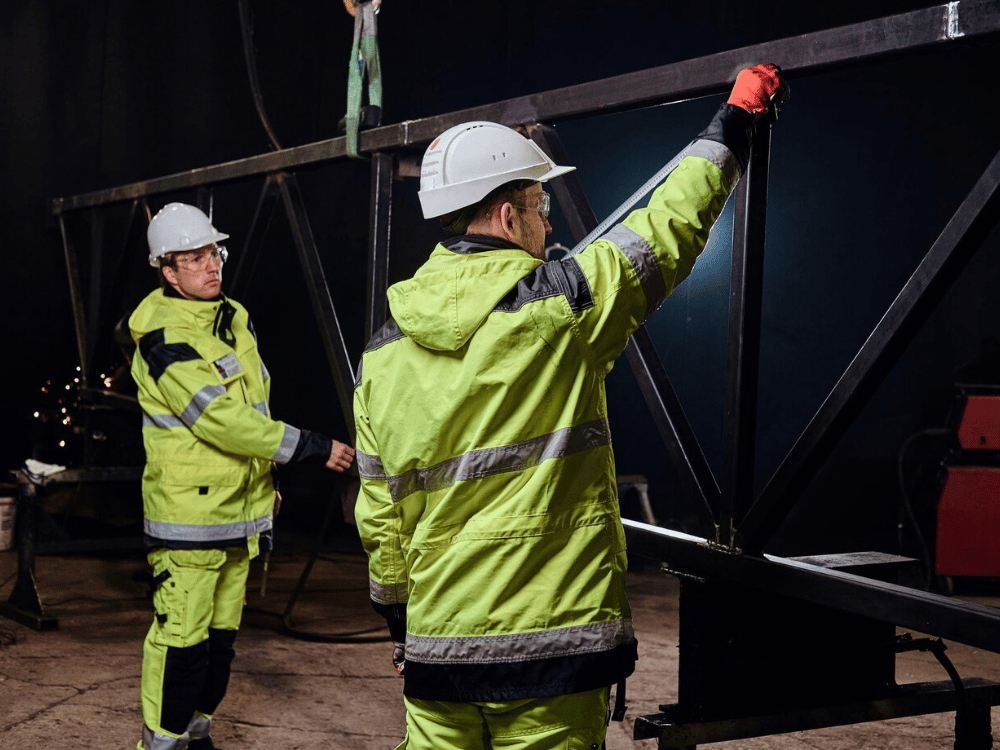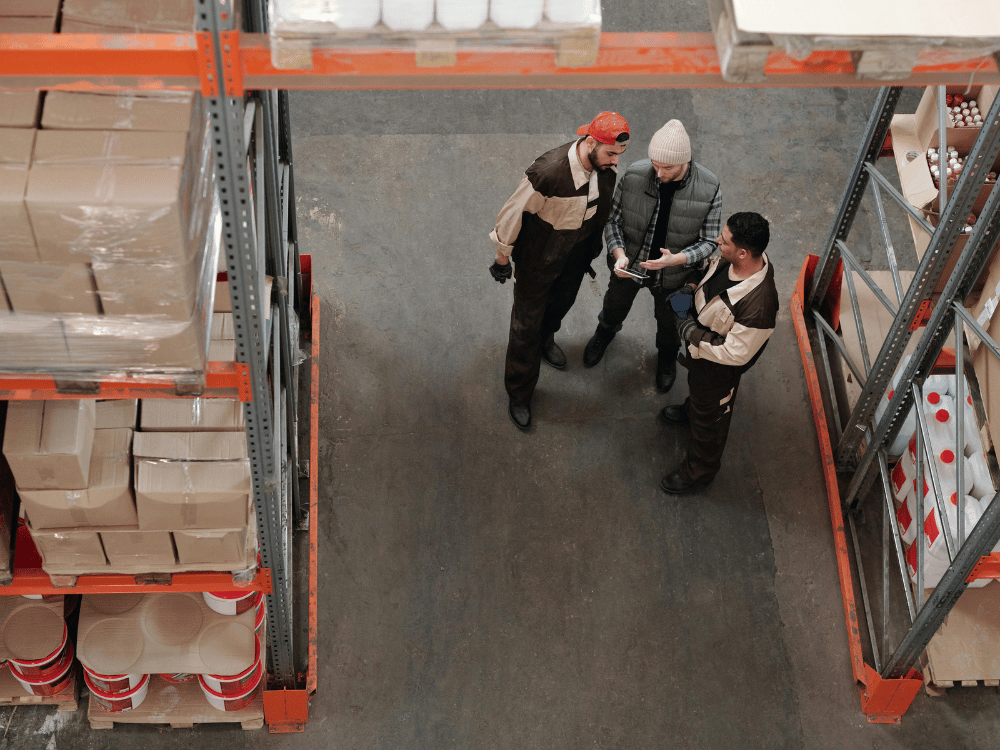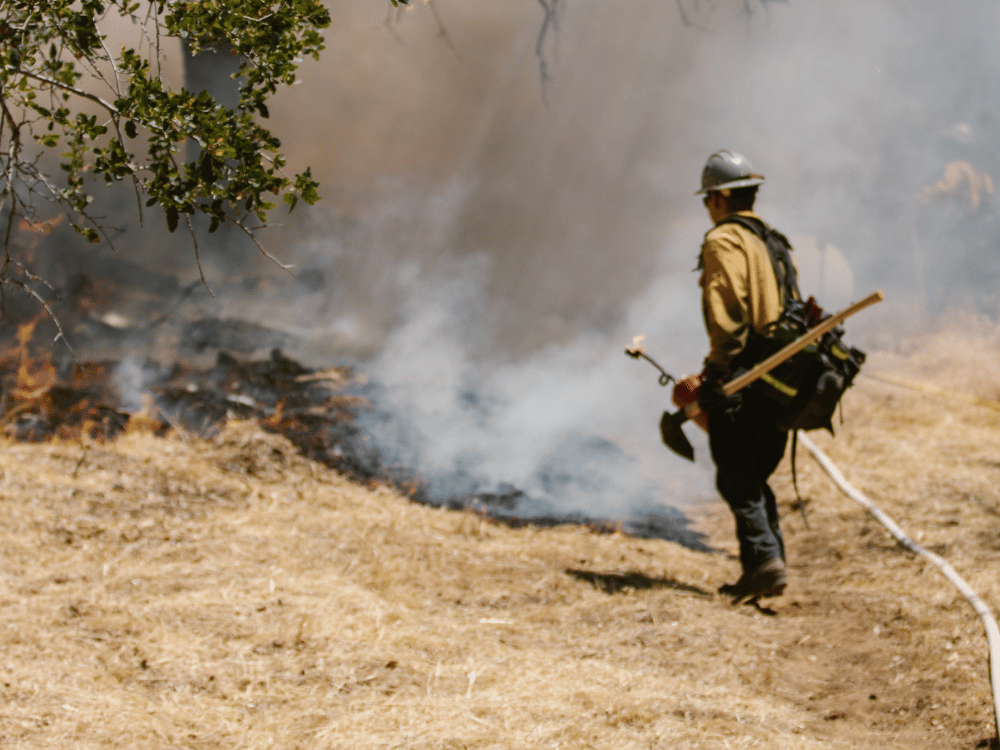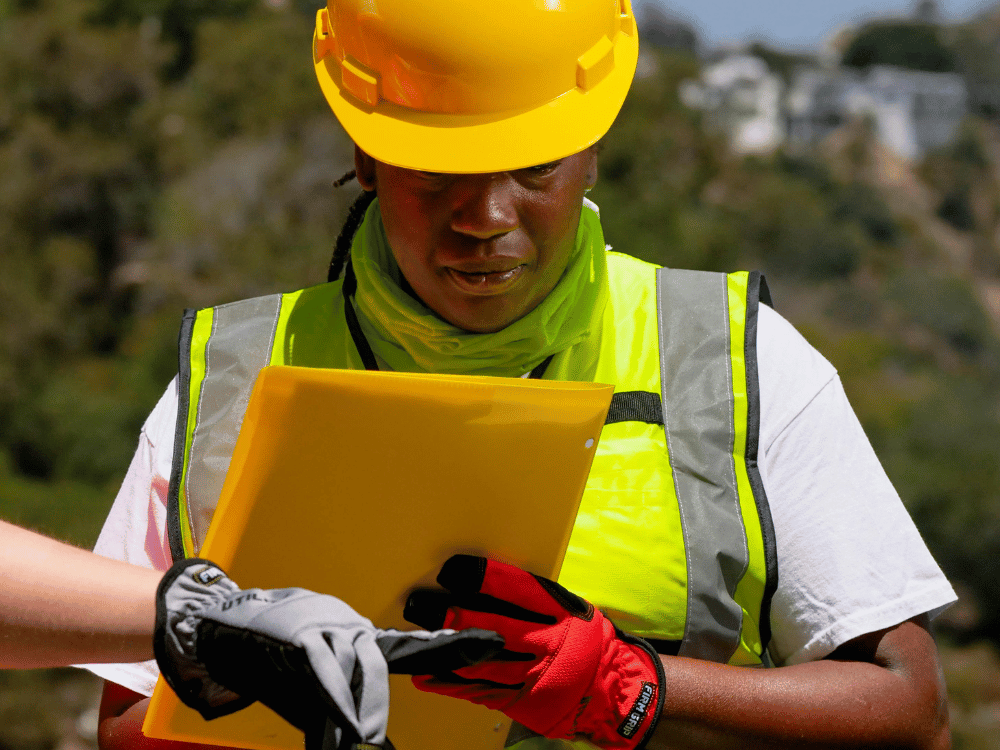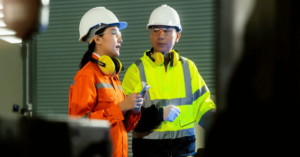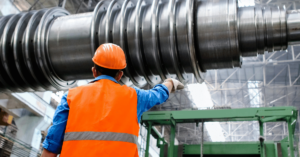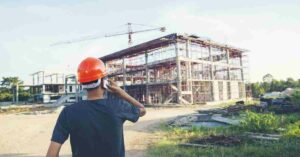135 people were killed in work-related accidents in 2022/23, according to Health and Safety Executive stats.
Of that number, over 81% were caused by risks such as falls from height, being struck by a moving vehicle or object, becoming trapped by something or contact with moving machinery.
But when did these incidents go from a hazard to a risk? What’s the difference between a hazard and a risk? And how can TSW Training courses help cement that understanding in your team?
Let’s make the distinction now and unpack more about hazards vs risks.
TL;DR – What is the Difference Between Hazard and Risk?
A ‘hazard’ is something in the workplace that could cause harm. Whereas a ‘risk’ refers to the likelihood and severity of harm resulting from exposure to that hazard.
Take a bottle of bleach, for example. Whether this is stored safely up high or in a locked cupboard, it can still be thought of as a hazard. However, the bleach becomes a risk when someone removes it from storage and does something unsafe – like drinking it.
| Hazard | Risk |
| Best to be assessed when a new particular task or activity is about to be carried out. | Best to be assessed when implementing changes, new strategies, or equipment. Or when a hazard is identified. |
What is a Hazard? What is a Hazard In Health And Safety?
Put simply, a hazard is anything that can cause harm. But there are more details to this definition. Because some hazards are harder to spot than others, they can all be defined as either acute or chronic.
- Acute hazards: Obvious hazards that pose clear risks.
- Example: Liquid spillages or uncovered manholes.
- Chronic hazards: More disguised or hidden hazards that could go on to become a risk.
- Example: Uncomfortable furniture, which could increase the risk of musculoskeletal issues.
When we understand that all hazards can fall into one of these two categories, we can start to define the different types of workplace hazards. This is where knowing how to conduct a thorough risk assessment becomes extremely important.
What is a Hazard in the Workplace?
Hazards in the workplace cover a wide range of objects or activities. Courses like our IOSH Managing Safely award at TSW Training can help you define and assess these.
Present across all sectors, workplace hazards highlight the items or acts that could cause someone harm.
From hazardous substances to untidy spaces to items like scaffolding, ladders and electrical wiring, all are examples of hazards that (under certain circumstances) could cause harm.
When hazards like these are identified, they should be eliminated as soon as possible.
What are the 4 Main Types of Hazards?
Breaking that down further, both acute and chemical hazards can be categorised into these four types:
1. Physical Hazard
Physical hazards are extremely common in the manufacturing or construction sectors. They pertain to environmental factors like trailing cables, vibrations, excessive noise, poor illumination, or radiation.
However, physical hazards can also exist in office environments and everyday life. Examples of these common risks would be wet floors and trip hazards.
Elements like health and safety training courses as well as personal protective equipment (PPE), play huge roles in mitigating the risk of these hazards.
2. Biological Hazard
Biological hazards are more prevalent in workspaces such as kitchens, care homes and other medical facilities. There are four types of biohazards:
- Level 1: Agents that pose minimal threat to humans, like E. Coli.
- Level 2: Causes of severe illness in humans, agents such as HIV and hepatitis.
- Level 3: Pathogens like tuberculosis that can become airborne and cause serious diseases.
- Level 4: Diseases like Ebola, which are pathogens that threaten life and have no cure.
Posing a significant risk to humans, these hazards can be controlled, again, through appropriate training and the use of PPE.
However, industrial cleaning and a commitment to keeping workspaces tidy is also an effective way to mitigate biological hazards.
3. Chemical Hazard
One good example of a chemical hazard is asbestos. In its standard form, asbestos is not dangerous.
However, as our asbestos awareness course highlights, it becomes an acute chemical hazard when cut or disturbed. The microscopic fibres can be inhaled, causing scarring and inflammation. This, in turn, can develop into respiratory issues.
4. Ergonomic Hazard
Ergonomic hazards are physical factors around the workplace that can lead to musculoskeletal issues. Common in office environments, ergonomic hazards are attached to workstations and performing standard tasks.
Actions like lifting and carrying heavy boxes can trigger musculoskeletal issues. But so too can simple activities such as sitting at a desk incorrectly.
Because ergonomic hazards are prevalent in many workplaces, recent figures have shown that 470,000 workers were suffering from musculoskeletal disorders in 2022.
How to Identify a Hazard
Hazard identification is a huge part of risk assessment training. Moreover, understanding how to spot a hazard as part of a workplace inspection is a pivotal experience.
During workplace observations, you scan the environment for anything that could potentially harm workers, site visitors or customers.
To fully understand this, you will need to observe tasks being carried out, review the quality of equipment and tools being used, and review your site design.
What is a Risk? What is a Risk in the Workplace?
As we mentioned earlier, a risk in the workplace is the likelihood of someone being harmed by a hazard. This assessment also takes into account the potential severity of the hazard.
Types of Risks
Our IOSH Managing Safely course suggests that, like in hazard perception, there are many different types of risks. However, these eight are the core ones to be aware of:
1. Dynamic Risk
Dynamic risks are defined as factors that are changeable throughout their life. Examples of dynamic risks in the workplace include peer pressure or unemployment.
To battle these risks, businesses can carry out Dynamic Risk Assessments. These reviews are more agile than standard assessments, designed to assess hazards in changeable atmospheres, such as home visits for carers or construction workers starting a project on a new site.
2. Static Risk
In contrast, static risks are unchangeable. They generally refer to historical events in an employee’s past. Examples of static risk factors could be a history of abuse or violence.
These are deemed static factors, and new events cannot affect their existence.
3. Fundamental Risk
Fundamental risks are unavoidable than most other types of risk. TechTarget defines fundamental risk factors as actions that affect large numbers of the population. Factors like natural disasters can be included in this.
4. Particular Risk
Alternatively, particular risk is more measured. These affect individuals rather than large groups – think more along the lines of targeted acts such as theft.
5. Subjective Risk
When it comes to subjective and objective risk factors, these rely more on the person defining the risks and data collection to prove the existence of a risk.
For example, subjective risk would be the idea that someone who has used an industrial press for many years would be less vulnerable to risk when using the machine than a new colleague using it for the first time.
Another, more everyday example, outlined by risk assessment instructor Andrew Sheves, is:
“A child might see an icy sidewalk as a fun thing to slide on, so their perception is that there is no risk. A retiree will perceive this as a high risk as their chance of falling and becoming injured is higher and more debilitating. If a kid falls, they usually just get up and carry on with what they are doing.”
6. Objective Risk
Objective risk, on the other hand, is more based on empirical evidence and data. It helps to think of this as a risk of hurricanes or earthquakes.
Meteorological data suggests that the threat of such activities is low in the UK. But if you were to visit locations like the Caribbean during hurricane season (for example), the likelihood increases.
7. Financial Risk
According to research by Investopedia, there are four main categories of financial risk:
- Market risk: Refers to changes in the overall landscape within which a company trades. Elements such as shopper habits are perfect examples of this.
- Credit risk: Companies can be exposed to credit risk when offering finance plans to customers or leveraging them when trading with suppliers.
- Liquidity risk: Liquidity risk refers to how easy it would be for a company to turn its assets into cash.
- Operational risk: These risks are more ingrained in everyday trading, including staffing issues, lawsuits or fraud.
8. Non-financial Risk
Examples of non-financial risk include supply chain or third-party risk, compliance, cyber and reputational risk. Elements of operational risk can also fall under this umbrella term.
As the name suggests, this type of risk refers to factors that do not involve a financial decision. However, non-financial incidents can still have a lasting impact on a business’s bottom line. Think about how a company can be affected by a negative customer review or damaging media exposure.
How to Determine the Risk Level
One of the most common ways health and safety professionals determine risk is through the 5×5 risk matrix.
In each cell of a 5×5 risk matrix, there is a number or phrase that rates the severity of the perceived risk from “low” or “insignificant” up to “severe” or “high”. It also attributes a number to the likelihood of the hazard becoming a risk.
The purpose of the matrix is to help further define which hazards in your environment require standard monitoring and which need removing immediately.
What are Some Examples of Hazards and Risks?
Examples of hazards and risks are:
| Hazard | Risk |
| There is a shark swimming in the sea. | You choose to go for a swim as well. |
| A heavy box needs moving. | Picking it up incorrectly. |
| Cooking eggs | Contracting salmonella through eating undercooked eggs. |
| Refuelling a car. | Refuelling a car while smoking a cigarette. |
| Driving down a road. | Driving down a road in a snowstorm. |
5 Differences Between Hazard and Risk
To further distinguish between hazards and risks, let’s list out 5 key differences:
- Hazards define an object or activity’s potential to cause harm. Risk is the likelihood of a hazard occurring.
- Hazards exist regardless of exposure or vulnerability. Risk considers both the probability and severity of harm.
- Hazards can be physical, biological, chemical or ergonomic. Risks can take many forms, from physical risks like wet floors to reputational risks like bad reviews or financials.
- Hazards don’t need to be obvious to be defined as a hazard. Risks are determined more by exposure to them.
- Hazards can be identified through observation, testing and data. Risk mitigation and management involve implementing controls.
Relevant Characteristics Between Hazard and Risk
| Hazard | Risk | |
| Nature | Potential to cause harm | Likelihood and consequence |
| Inherent Property | What are the potentially dangerous elements of the property or material? | What could the effects of that element be? |
| Type | Physical, chemical, biological or ergonomic | Probability and severity |
| Identification | Observed, tested or historical data | Evaluated through risk assessments |
| Measurement | 1-5 | Low, medium, high |
| Presence | Exist regardless of exposure | Depends on exposure and vulnerability |
What About Vulnerability?
Vulnerability is prominent in risk perception, especially concerning dynamic and subjective risks.
As we alluded to earlier in the icy sidewalk analogy, a child may be less concerned about the risks of sliding on ice. However, an elderly person would be vulnerable to more severe risks by encountering the same hazard.
Similarly, companies regularly offering finance agreements are more vulnerable to credit risk.
Bottom Line
Although they are inextricably linked, many differences exist between hazards and risks. Understanding those changes is vital to ensuring your workplace is as safe as possible.
So is training your staff in the latest health and safety standards. Our IOSH Managing Safely course offers the perfect opportunity to elevate your management team’s safety knowledge.
Plus, with a +99% pass rate, we offer the best assistance to your worker’s development!


